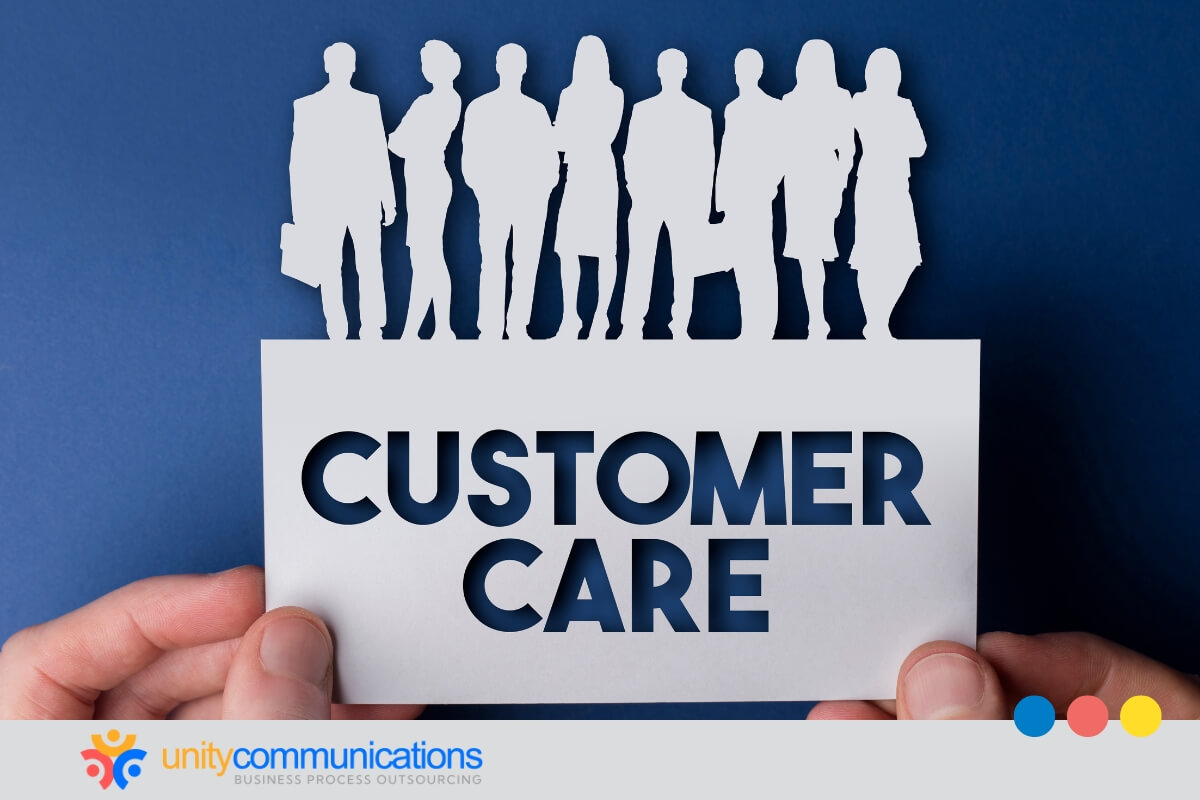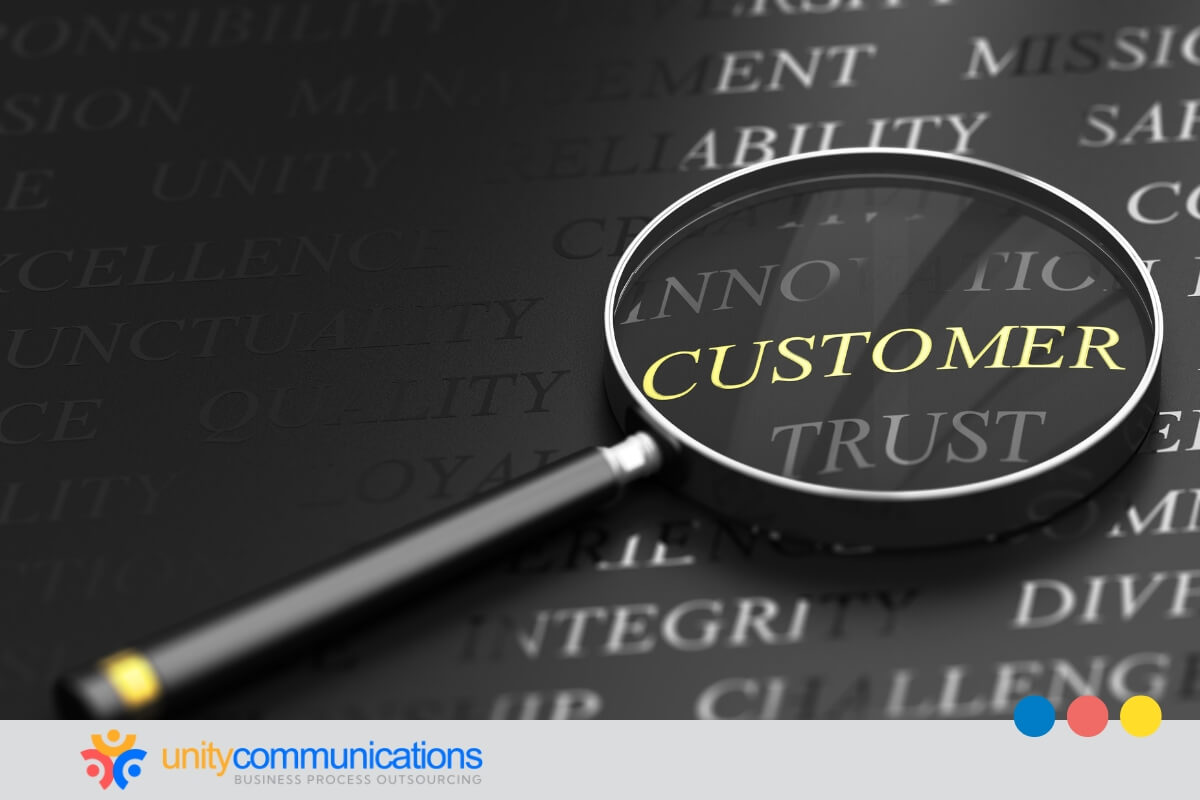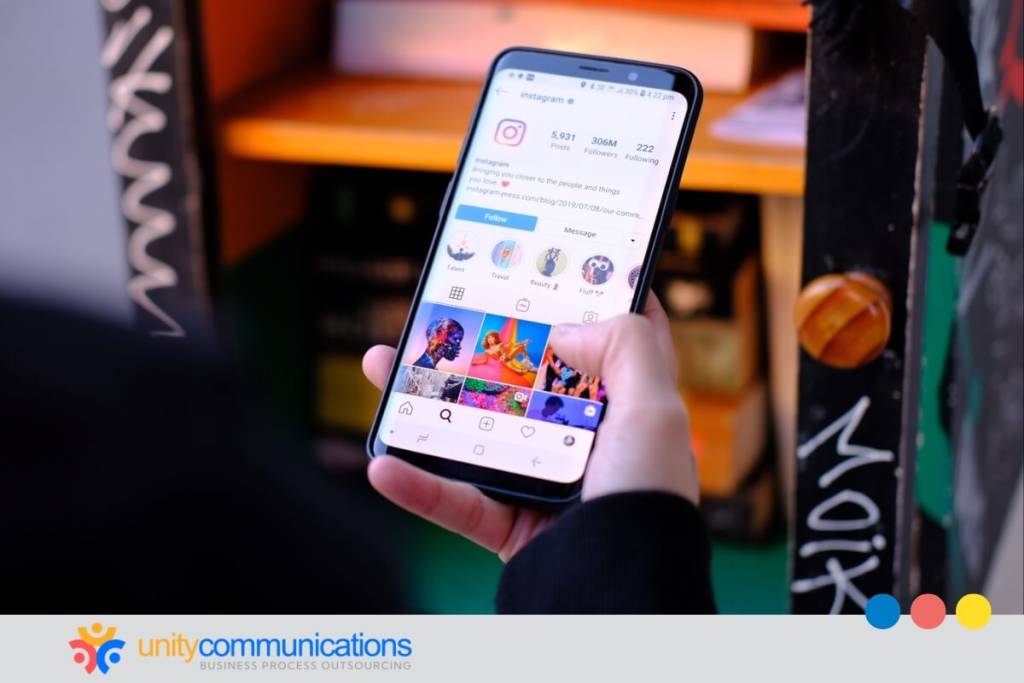Table of Contents
Establishing a seamless connection with customers is critical in e-commerce. Providing exceptional, insightful, and personalized support throughout the buyer’s journey significantly improves online business success.
A call center for e-commerce plays a central role in customer care, serving as a dedicated hub for addressing inquiries and concerns.
This article discusses the importance of flawless e-commerce customer care. It highlights 18 ways to improve this function to help grow and sustain your online store.
Read until the end to learn how to outsource customer care services to attain your goal of heightened customer-centricity.
Why You Need Seamless E-commerce Customer Care

You might be wondering, “What is e-commerce customer service?” It entails call or contact center personnel helping customers with their purchases by answering questions about the products or services or addressing issues. The aim is to provide online shoppers or end users with the best buying experience.
E-commerce businesses should provide seamless customer care to enhance satisfaction, foster loyalty, and drive business success. A smooth experience reduces friction in the buying journey, builds trust, and encourages repeat business.
Positive customer interactions also lead to favorable recommendations, helping attract new customers and contributing to long-term growth and competitiveness.
Do you want to learn how to achieve excellent online retail customer service? Keep exploring.
How to Improve E-commerce Customer Service

Significantly enhance your e-commerce customer care by following these strategies:
1. Develop User-friendly Website Design
A user-friendly website design promotes intuitive navigation, allowing customers to access information, browse items, and complete transactions with ease.
Check out how user-friendly website design contributes to exceptional e-commerce customer care:
- Improved user satisfaction. Enabling customers to effortlessly access information and buy from your store leads to a satisfying user experience, fostering positive brand sentiments.
- Higher conversion rates. Smooth interactions increase the likelihood of users becoming customers or achieving specific website goals.
Here are three tips for implementing a user-friendly website design:
- Design an intuitive navigation system with clear labels, organized menus, and a straightforward hierarchy for users to swiftly find desired content.
- Optimize your website for various mobile devices with responsive design, ensuring a consistent and user-friendly experience across different screen sizes.
- Place clear, labeled, and strategically positioned calls to action (CTAs), such as “Buy Now,” “Add to Cart,” or “Contact Us,” on your website to guide users and minimize confusion.
2. Provide Comprehensive Product Information
Thorough product information is crucial for a smooth e-commerce customer care experience. Businesses can even consider utilizing a virtual sales assistant to guide customers through their purchasing journey.
Below are the benefits of comprehensive product information:
- Reduced uncertainty. It minimizes hesitancy by addressing questions about product functionality and size. This lowers the risk of customer dissatisfaction.
- Informed decision-making. It helps customers better understand product features and compare their options, leading them to choose products aligned with their needs and preferences.
Below are three tips for ensuring comprehensive product information:
- Offer clear product descriptions encompassing key features, specifications, and benefits. Use precise language and avoid jargon for better understanding.
- Incorporate high-resolution images. Show videos displaying the product from various angles to aid customers in understanding its appearance, size, and functionality.
- Promote and showcase user reviews, ratings, and testimonials for prospective customers to gain insights from real users. Others’ experiences with the product further aid customers’ buying decisions.
3. Launch Live Chat Support
Live chat is vital for ongoing e-commerce customer care. This feature provides online shoppers with immediate access to agents for inquiries, issue resolution, and purchasing assistance.
Here are the benefits of live chat support:
- Quick issue resolution. Real-time chat assistance enables rapid and efficient complaint handling, minimizing customer frustration and increasing satisfaction.
- Reduced cart abandonment rates. By addressing customer concerns during the buying process, live chat decreases checkout abandonment rates and improves conversion rates.
Here are some tips for implementing live chat support:
- Place the live chat support feature strategically on relevant website pages, including product pages or checkout, to ensure easy accessibility.
- Initiate proactive chat invitations using triggers such as page duration or specific actions. Offer assistance before customers seek it, showcasing your commitment to service.
- Equip support agents with precise product, policy, and customer information. Emphasize a friendly, customer-centric approach to elevate consumer experience.
4. Streamline the Checkout Process
A simplified checkout process is vital in e-commerce customer care because it shortens the last phases of an enjoyable customer journey.
Look at the benefits of a streamlined checkout process:
- Faster transactions. Customers spend less time on the checkout page, and the company can process purchases more efficiently.
- Improved mobile experience. Simplifying the checkout process is especially advantageous for mobile users, easing the challenges of completing transactions on smaller screens.
Here’s how to streamline the checkout process:
- Reduce the number of steps in the checkout process. Only request information crucial for the transaction to keep the process efficient and straightforward.
- Offer a guest checkout option to allow customers to complete their purchases without creating an account.
- Provide clear progress indicators so customers know where they are in the checkout process. This step helps manage expectations and reduces any perceived complexity.
5. Display Clear and Transparent Pricing
Pricing that is simple to understand enhances the e-commerce customer care experience since it removes confusion, develops trust, and ensures customers feel confident in their purchase decisions.
Uncover the benefits of clear and transparent pricing:
- Minimized misunderstandings. Clear pricing reduces the risk of customer dissatisfaction and conflicts by presenting all costs transparently.
- Improved clarity. Customers appreciate knowing the total cost upfront, reducing uncertainty and promoting a positive buying experience.
Below are three tips for implementing clear and transparent pricing:
- Show all costs, including product prices, taxes, and shipping fees, on the website during the buying journey.
- To simplify the overall price components, offer a detailed cost breakdown for each product or service, including itemized lists of expenses.
- Communicate purchase terms, conditions, and fees, such as promotions or shipping, upfront to manage customer expectations and foster trust.
6. Offer Order Confirmation and Tracking
Optimized order confirmation and tracking are critical for a better e-commerce customer care experience. These processes deliver real-time updates to consumers, providing transparency and building their confidence.
Uncover the benefits of order confirmation and tracking:
- Reduced customer concerns. This feature alleviates customer anxiety by providing transparency and visibility into the status and location of orders throughout fulfillment.
- Proactive issue resolution. Tracking identifies issues early in order fulfillment, allowing businesses to address problems preventatively.
Here’s how to optimize order confirmation and tracking:
- Send automated confirmation messages promptly after purchase to assure customers their order has been received. Include essential details, such as the order number and purchased items.
- Provide real-time tracking for customers to monitor their order status and location. Ensure easy access through a user-friendly interface on your website or app.
- Update customers on order progress, including shipping and delivery notifications. Keep them informed about potential delays.
7. Send Personalized Thank-You Emails
Send individualized thank-you emails if you want to deliver an excellent e-commerce customer care experience. It adds a thoughtful touch, expressing gratitude for the purchase.
Learn the benefits of personalized thank-you emails:
- Appreciative customer base. Personalized emails express gratitude for the customer’s purchase, making them feel valued and acknowledged by the business.
- Increased engagement. Personalized communication boosts interaction. Customers are more likely to interact with customized emails, enabling continuous communication and marketing.
Below are three tips for more personalized thank-you emails:
- Use the customer’s name in the email greeting to establish an intimate connection, enhancing your message’s impact.
- Highlight specific customer purchases to reinforce a personal touch and show that the message is tailored to their buying behavior.
- Provide personalized recommendations based on the customer’s purchase history. Enhance their experience and create opportunities for additional sales and engagement.
8. Solicit Customer Feedback
Soliciting consumer feedback helps develop a smooth e-commerce customer care experience. It provides vital insights into buyer happiness, highlights areas for development, and indicates a dedication to addressing customer demands.
Know about the benefits of customer feedback solicitation:
- Identified areas for improvement. Customer feedback determines improvement areas, enabling businesses to make necessary adjustments based on concerns or suggestions.
- Deeper insight into customer satisfaction. Gathering comments provides insights into customer satisfaction, helping businesses align products or services with their expectations.
Here are three tips for effective customer feedback solicitation:
- Be straightforward and specific with your questions. Direct inquiries about the customer’s experience and suggestions facilitate meaningful responses.
- Choose the right time for feedback requests, sending them post-purchase or through interaction. Select moments when the customer’s experience is fresh in their minds.
- Provide diverse feedback channels, including email surveys, online forms, or website feedback buttons, to boost the chance of gathering valuable insights.
9. Engage in Social Media
Social media participation improves the e-commerce customer care experience. It allows businesses to address problems and establish connections in real time by facilitating direct contact.
Explore the benefits of customer feedback solicitation:
- Community-building efforts. Social platforms offer space for community building. Businesses foster loyalty by encouraging discussions on experiences and promoting belonging within their customer community.
- Higher brand visibility and recognition. Active social media engagement enhances business exposure and awareness. Regular interactions create a positive brand image, fostering customer trust and loyalty.
Below are tips for effective social media engagement:
- Respond promptly to customer inquiries, comments, and messages on social media platforms to show commitment.
- Proactively address customer issues on social media. Be transparent about problem-solving efforts, providing updates and solutions publicly.
- Generate content that encourages customer interaction. Pose questions, run polls, and share relevant information to stimulate conversations and attract a broader audience.
10. Deploy Multichannel Support
Offering multichannel service heightens the e-commerce customer care experience by ensuring accessibility across various communication channels. This approach allows customers to engage through their preferred means.
Delve into the benefits of multichannel support:
- Flexible and convenient service. Customers appreciate the flexibility to choose how they engage with support. Multichannel options provide convenience, catering to different communication styles and schedules.
- Increased accessibility. Multichannel support ensures customers can contact your business through their preferred communication channels, raising availability and accommodating diverse preferences.
Here are some tips for implementing efficient multichannel support:
- Ensure your systems provide a unified view of multichannel customer interactions. It enables seamless transitions and empowers support agents with comprehensive information.
- Maintain consistent messaging across all channels. Whether via email, social media, or live chat, ensuring a unified brand voice and message reinforces a cohesive customer experience.
- Prioritize responsiveness on all channels. Timely responses showcase commitment to customer care, enhancing satisfaction and trust.
11. Provide 24/7 Availability
Accessibility is vital for a nonstop e-commerce customer care experience since many customers expect support around the clock.
Consider the benefits of 24/7 e-commerce customer care:
- Competitive edge. Businesses that offer continuous support differentiate themselves, attracting customers who prioritize accessibility and responsiveness.
- Global reach. Round-the-clock support accommodates customers in different time zones, providing international accessibility and catering to a more diverse customer base.
Below are tips for providing 24/7 availability:
- Establish shifts and rotations for customer support teams to ensure coverage around the clock. This allows for consistent availability without exhausting individual agents.
- Utilize automated systems to address basic inquiries and tasks outside of business hours. Automation offers instant responses and preliminary assistance when live support is unavailable.
- Employ global customer support teams to leverage different time zones. Cater to peak times in other regions and offer continuous assistance to a broader customer base.
12. Establish an Efficient Ticketing System
A flawless e-commerce customer care experience demands an effective ticketing process. It simplifies issue monitoring, organizes client questions, and provides a systematic response procedure.
Assess the benefits of an efficient ticketing system:
- Reduced response times. The system streamlines communication, allowing support teams to respond promptly to customer inquiries and minimizing wait times.
- Organized issue tracking. An efficient ticketing system manages and tracks customer issues, ensuring no inquiry is overlooked and providing a structured approach to problem resolution.
Here are three tips for setting up an efficient ticketing system:
- Simplify ticket categorization and prioritization, allowing teams to allocate resources efficiently based on the nature of each inquiry.
- Automate ticket routing to the appropriate support teams, streamlining resolution by promptly ensuring each ticket reaches the proper personnel.
- Include detailed tracking and reporting in the ticketing system to monitor response times, identify customer inquiry trends, and gain insights.
13. Empower Customer Service Agents
Empowering customer support agents is crucial for a consistent e-commerce customer care experience. Provide tools and training to enable autonomous and successful problem resolution.
Study the benefits of empowered customer service agents:
- Increased autonomy and decision-making. Empowered agents foster quick decision-making, enabling dynamic responses to customer needs.
- Enhanced problem resolution. Agents can address customer issues more effectively, leading to quicker and more satisfactory problem resolution.
Below are tips to empower customer service agents:
- Equip agents with thorough training on products, policies, and customer service techniques. This knowledge empowers them to handle a variety of inquiries confidently.
- Provide agents with accessible tools and a comprehensive knowledge base for accurate and timely issue resolution and assistance delivery.
- Cultivate a culture that supports autonomy within limits. Empower agents to make decisions independently, enabling them to adapt to unique customer situations and contribute to a seamless support experience.
14. Execute Clear Return Policies
Straightforward guidelines regarding product returns are critical for providing an uninterrupted e-commerce customer care experience. Transparent regulations lessen client confusion and boost purchase confidence.
Check out the benefits of clear return policies:
- Increased confidence in purchases. Transparent policies instill confidence in buying decisions, assuring customers that returns are straightforward and fair.
- Greater business trust. Clear policies establish trust between the customer and the e-commerce company, fostering positive relationships and repeat purchases.
Here are three tips for executing clear return policies:
- Communicate return policies on your website, ensuring customers can easily find and understand the guidelines. Use straightforward language to eliminate ambiguity.
- Streamline the return process to make it user-friendly. Provide clear instructions, simple forms, and easy-to-follow steps, minimizing potential customer friction.
- Ensure your customer service teams are well-trained in the return policies. Empower them to answer inquiries and assist customers through the return process with clarity and empathy.
15. Provide Order Status Updates
Regular updates keep customers informed about the status of their purchases, instilling trust, reducing ambiguity, and fostering transparency. This proactive communication improves the fluidity of e-commerce customer care.
The following are the benefits of order status updates:
- Word-of-mouth recommendations. Positive experiences, facilitated by clear order updates, lead to verbal endorsements. This attracts new customers to the business.
- Empowered customers. Well-informed customers feel confident because they know the status of their orders and have realistic expectations.
Below are tips for effective order status updates:
- Use systems offering real-time tracking to provide accurate and up-to-date order information.
- Compose order updates in clear, jargon-free language, conveying vital details such as shipping dates, tracking information, and possible delays.
- Enable customers to customize notification preferences for a personalized, non-intrusive communication experience.
16. Share Product Restock Alerts
Sharing product restock alerts helps provide a first-rate e-commerce customer care experience. They inform customers about the availability of desired items so they can promptly buy them when replenished.
Below are the benefits of sharing product restock alerts:
- Increased sales opportunities. Prompt alerts allow customers to make additional purchases upon supply replenishment.
- Minimized customer inquiries. Alerts preemptively answer questions about product availability, reducing the need for customer inquiries.
Here’s how to maximize product restock alerts:
- Let customers customize their restock alert preferences, such as frequency and notification channels, for a more personalized experience.
- Craft restock alerts in clear and concise language, providing relevant information about the filled product (e.g., availability, quantity, and promotions).
- Implement real-time or near-real-time systems for restock alerts to ensure customers receive timely notifications, enabling them to act swiftly upon product availability.
17. Offer Rewards for Repeat Customers
Giving incentives to regular patrons elevates the e-commerce customer care experience. Rewards, such as discounts or exclusive offers, show appreciation and enhance overall satisfaction, contributing to lasting customer relationships.
Find out the benefits of offering rewards for repeat customers:
- Reduced customer churn. Rewards deter customers from switching to competitors.
- Higher customer advocacy. Rewarded customers become brand advocates, promoting the business through positive reviews.
Here are three tips for implementing rewards for repeat customers:
- Introduce tiered loyalty programs where customers earn increasing rewards per purchase. This structure encourages continued engagement and repeat business.
- Tailor rewards based on individual customer preferences and purchase history. Personalization enhances the perceived value of the incentives.
- Communicate the rewards program so customers understand how to earn and redeem them. Timely communication about upcoming promotions or exclusive offers encourages repeat business.
18. Monitor Industry trends
Staying current on industry developments is necessary for seamless e-commerce customer care. Getting updates on trends in customer service allows you to adjust strategies and deploy novel approaches.
Discover the benefits of monitoring industry trends:
- Mitigated risks. Identifying potential challenges allows businesses to proactively address issues.
- Innovative solutions. Trends highlight new technologies and methodologies, fostering innovative approaches to customer care.
Here’s how to monitor industry trends in customer service:
- Use data analytics tools to monitor customer interactions, feedback, and market trends, gaining insights into industry shifts.
- Read and subscribe to industry publications, blogs, and news to stay updated on customer service trends, tech advancements, and best practices.
- Participate in customer service and e-commerce conferences, webinars, and workshops for networking and learning opportunities.
Outsourcing to Boost E-commerce Customer Care Experience

Subcontracting customer service operations to a business process outsourcing (BPO) company can help you perform the 18 methods mentioned above for seamless e-commerce customer care.
Many BPO providers offer affordable call center services, delivering high-quality customer support, efficient communication, and tailored solutions to businesses seeking reliable outsourcing options.
They also provide different functions, including outbound and inbound call centers for e-commerce businesses. These services enhance customer interactions, drive sales, and ensure a seamless customer care experience.
To find the best call center for e-commerce, follow these steps:
- Discuss your customer service outsourcing plans with stakeholders. Determine the number of third-party customer service representatives, communication channels, and outsourcing tactics most appropriate for the company’s goals and expected outcomes.
- Evaluate candidates based on organizational needs. Consider their staff, skills, achievements, and track record. Select partners offering specialized teams for outsourced tasks.
- Ask about each prospect’s overall charges, fees, and billings. The cost of e-commerce call center services depends on the prospect’s track record and business requirements.
- Limit the number of candidates and gather essential information. Send a request for proposal (RFP) to each short-listed applicant, outlining the job scope, duration, budget, and required solutions for the assigned tasks.
- Choose the third-party provider with the best benefits. Generate a service-level agreement (SLA) with your BPO provider. The SLA specifies the services requested and other crucial requirements that must be met, such as key performance indicators (KPIs).
- Keep an eye on outsourced activity. Ascertain if the partnership meets all the objectives within the time frame. Maintain regular contact with the BPO partner to increase the chances of successful outsourcing.
The Bottom Line
The methods above help transform online interactions. These strategies enhance satisfaction, build trust, and foster buyer loyalty. Applying these practices ensures a competitive edge for long-term business success.
Outsourcing e-commerce customer service to a BPO company can accelerate such practices. The service provider can streamline operations and offer cost-effective solutions to deliver top-notch customer care.
Let’s connect to learn more about ways to create a seamless e-commerce customer care experience!




